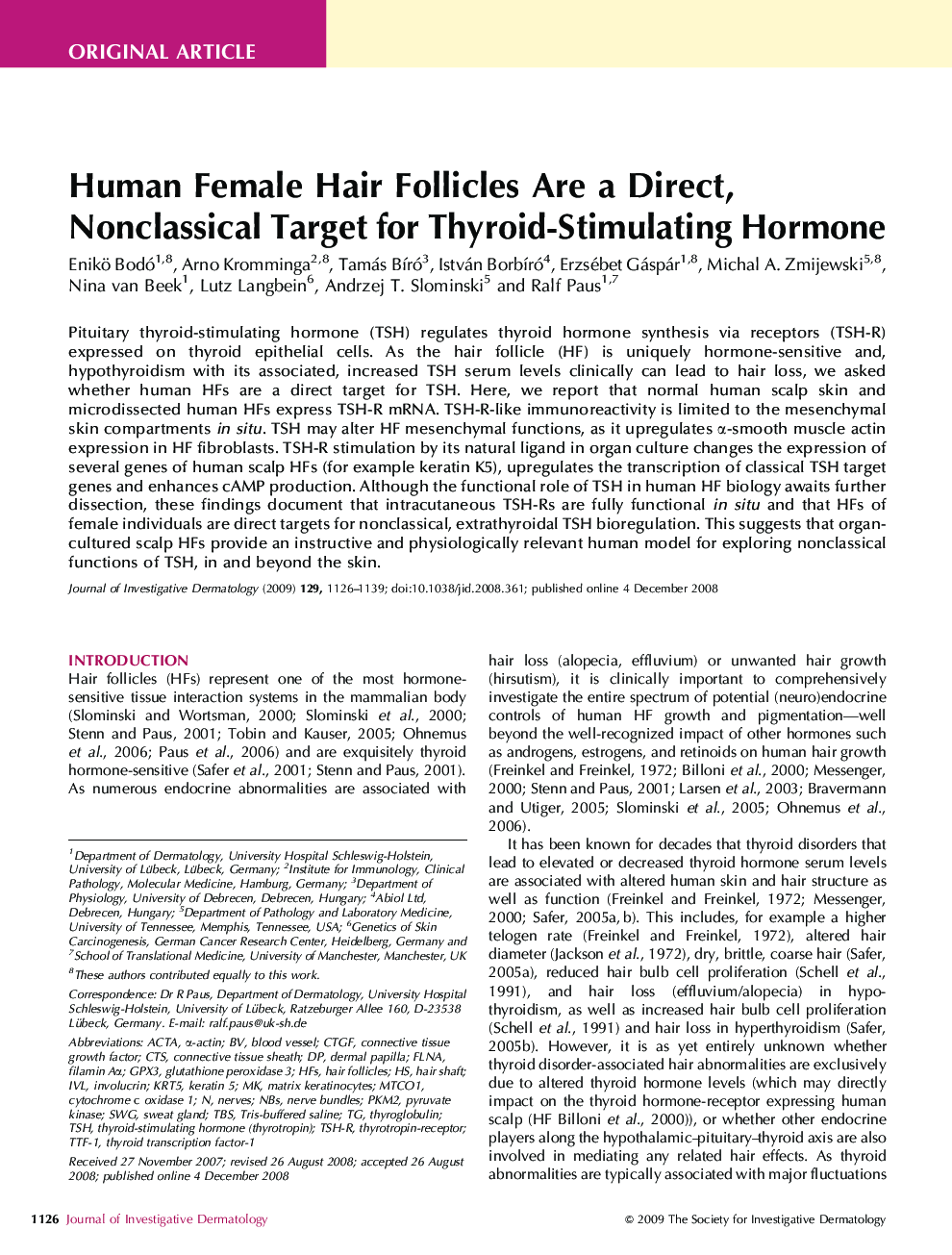| Article ID | Journal | Published Year | Pages | File Type |
|---|---|---|---|---|
| 3217038 | Journal of Investigative Dermatology | 2009 | 14 Pages |
Pituitary thyroid-stimulating hormone (TSH) regulates thyroid hormone synthesis via receptors (TSH-R) expressed on thyroid epithelial cells. As the hair follicle (HF) is uniquely hormone-sensitive and, hypothyroidism with its associated, increased TSH serum levels clinically can lead to hair loss, we asked whether human HFs are a direct target for TSH. Here, we report that normal human scalp skin and microdissected human HFs express TSH-R mRNA. TSH-R-like immunoreactivity is limited to the mesenchymal skin compartments in situ. TSH may alter HF mesenchymal functions, as it upregulates α-smooth muscle actin expression in HF fibroblasts. TSH-R stimulation by its natural ligand in organ culture changes the expression of several genes of human scalp HFs (for example keratin K5), upregulates the transcription of classical TSH target genes and enhances cAMP production. Although the functional role of TSH in human HF biology awaits further dissection, these findings document that intracutaneous TSH-Rs are fully functional in situ and that HFs of female individuals are direct targets for nonclassical, extrathyroidal TSH bioregulation. This suggests that organ-cultured scalp HFs provide an instructive and physiologically relevant human model for exploring nonclassical functions of TSH, in and beyond the skin.
